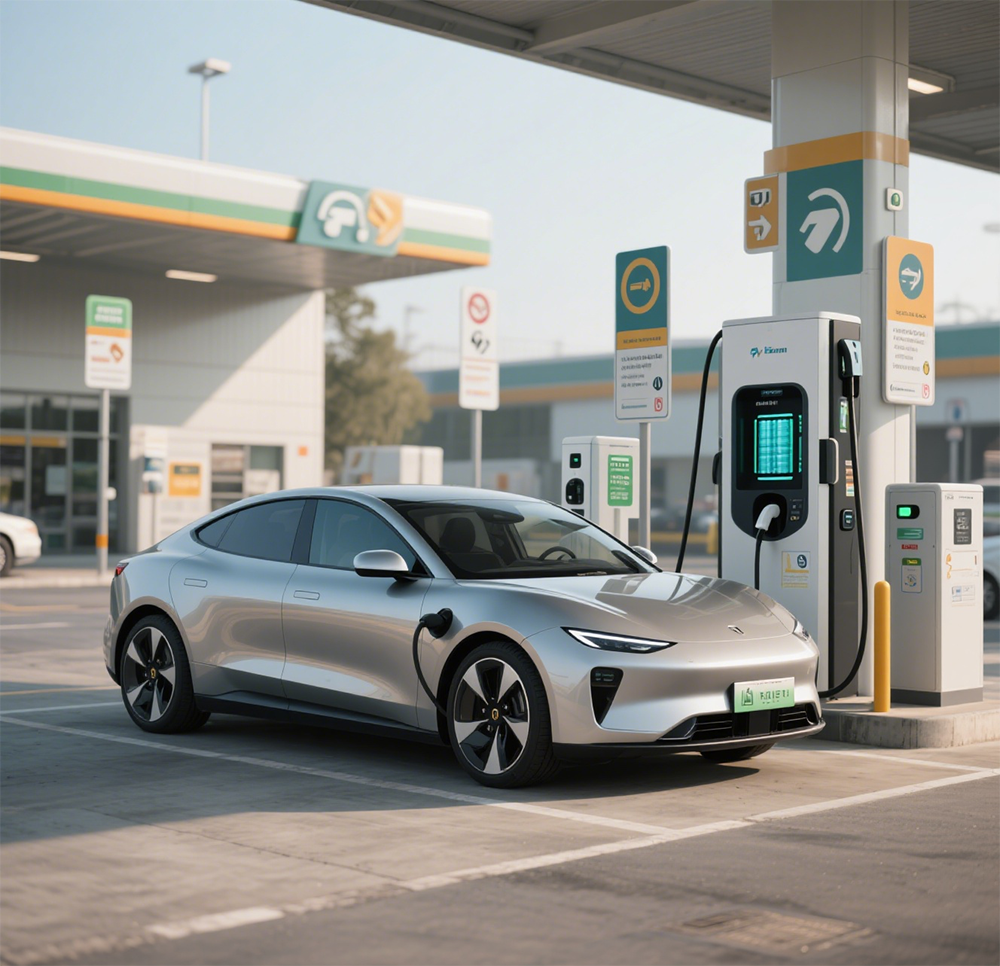مع انتقال العالم نحو مصادر الطاقة المتجددة، وصلت الحاجة إلى حلول لتخزين الطاقة إلى مستوى أولوية جديد. يحمل تطوير بطاريات أيونات الصوديوم إمكانية تغيير هذا المشهد لأنظمة تخزين الطاقة. يشرح هذا المقال سبب اكتساب بطاريات أيونات الصوديوم زخمًا متزايدًا، ومزاياها مقارنةً ببطاريات الليثيوم الحديدي، والدور الذي ستلعبه في مستقبل تخزين الطاقة.
الحالة الخاصة بالصوديوم: الوفرة والتكلفة المعقولة
مقارنة ببطاريات الليثيوم (LIBs)، فإن بطاريات أيونات الصوديوم (SIBs) لا تقل فعالية، بل قد تكون أكثر فعالية نظرًا لأن الصوديوم أقل تكلفة ويتوافر بوفرة مقارنة بالليثيوم. ومع ازدياد الطلب العالمي المدفوع بمركبات النقل الكهربائية والمصادر المتجددة للطاقة، أصبحت الحاجة إلى تقنيات بطاريات بديلة أمرًا ملحًا. ويُعد الصوديوم، وهو العنصر السادس من حيث الوفرة على الأرض، خيارًا واعدًا نظرًا لإمكانية الحصول عليه بسهولة من البحيرات المالحة والبحار وحتى بعض المعادن. وينعكس هذا التيسير في الاستحواذ مباشرةً على انخفاض تكاليف الإنتاج أيضًا. عادةً ما تكون المواد القائمة على الصوديوم أرخص بنسبة تتراوح بين 30-50% مقارنة بالليثيوم، مما يسهم في تسريع عملية بناء البنية التحتية لتخزين الطاقة. وبما أن بطاريات أيونات الصوديوم قادرة على استخدام أيونات الصوديوم كحاملات شحن، فهي أكثر صداقة للبيئة ويمكنها تخفيف الضغط على موارد الليثيوم التي تتركز في بعض الدول ذات السلاسل اللوجستية المحدودة.
المزايا البيئية: طريق أكثر خضرة لتوليد الطاقة
تُعدّ تقليل الأثر البيئي واحدة من مزايا بطاريات أيونات الصوديوم. فعلى سبيل المثال، يتطلب استخراج الليثيوم تعدينًا كثيف الاستهلاك للمياه في أماكن مثل صحراء أتاكاما في تشيلي، حيث يؤدي تعدين الليثيوم إلى نضوب مصادر المياه وتلوث التربة. بالمقابل، فإن الحصول على الصوديوم عبر تحلية مياه البحر أو تعدين الملح عملية أكثر بساطة وأقل تأثيرًا بيئيًا، كما أنها تنبعث منها كميات أقل من الكربون أيضًا. علاوةً على ذلك، يستخدم تصنيع بطاريات أيونات الصوديوم كميات أقل من المواد الكيميائية السامة، مما يقلل من مخاطر التلوث أثناء عملية الإنتاج. مقارنةً ببطاريات الليثيوم أيون، فإن بطاريات أيونات الصوديوم تتميز باستقرار حراري أفضل، وبالتالي تقليل خطر حدوث ارتفاع مفرط في الحرارة والاشتعال. وهذا يسهل عملية إعادة التدوير ويقلل الضرر البيئي عند التخلص من البطاريات. تدعم هذه الفوائد استخدام بطاريات أيونات الصوديوم لتمكين تخزين الطاقة بكميات كبيرة مع دعم المبادرات الخاصة بخفض البصمة الكربونية.
اختراقات في الأداء: تقليص الفجوة مع الليثيوم
لقد تقلصت الفجوات في الأداء بين بطاريات أيونات الصوديوم وبطاريات الليثيوم بسبب التطورات الجديدة في علم المواد. كانت هناك مشكلات تتعلق بكثافة الطاقة وعمر الدورة لبطاريات SIBs الأولى، لكن الابتكارات الحديثة تغلبت على هذه المشكلات. قام الباحثون بتطوير كاثودات عالية الأداء، سواء أكانت أكاسيد معدنية انتقالية طبقية أم نظائر زرقاء برسيانية، ما يزيد من حركة أيونات الصوديوم ويرفع كثافة الطاقة إلى حوالي 160-200 واط ساعة/كجم، وهو أمر كافٍ للعديد من متطلبات تخزين الطاقة الثابتة. كما أن الأنودات الكربونية الصلبة، التي يتم تصنيعها إما من مصادر بيولوجية أو مصادر صناعية، تتيح إدخال أيونات الصوديوم بشكل مستقر، ولذلك ارتفع عمر البطارية إلى أكثر من 3000 دورة شحن وإعادة تفريغ تحت ظروف معملية. تسمح هذه التحسينات باستخدام بطاريات SIBs في مجموعة متنوعة من التطبيقات، بما في ذلك أنظمة تخزين الطاقة السكنية المتكاملة والطاقة الاحتياطية الموثوقة للمباني التجارية. علاوةً على ذلك، تتميز بطاريات SIBs بأداء قوي في درجات الحرارة القاسية، حيث تنخفض حتى -20°م وتزداد حتى 60°م دون فقدان الوظائف. مما يجعلها مفيدة في نطاق واسع من المناخات، من المناطق القطبية إلى الصحراوية.
تكنولوجيا بطاريات أيونات الصوديوم: سباق نحو التعميم
في مجال تكنولوجيا بطاريات أيونات الصوديوم (SIB)، يعمل بالفعل عدد من الشركات المصنعة ومراكز البحث على جعلها قابلة للتطبيق التجاري. تسعى شركات صينية، خاصةً CATL وBYD، إلى بدء الإنتاج الضخم لبطاريات SIB بحلول عام 2025 لاستخدامها في أنظمة تخزين الطاقة والمركبات الكهربائية الاقتصادية. وفي أوروبا، تركز شركات ناشئة مثل Tiamat Energy على التطبيقات على نطاق الشبكة وتتعاون مع شركات المرافق لاستخدام بطاريات أيونات الصوديوم في مشاريع الطاقة المتجددة. تنبع هذه الجهود من حقيقة أن بطاريات أيونات الصوديوم أسهل في التوسيع مقارنة ببطاريات الليثيوم أيون. كما تُظهر شركات المرافق اهتمامًا كبيرًا باستخدام بطاريات SIB في تخزين طاقة الشبكة لأن هذه البطاريات ضرورية لتحقيق التوازن في الطاقة الشمسية والريحية المتاحة بشكل متقطع. وفي المناطق النائية، تعزز بطاريات SIB الوصول إلى الطاقة والاستدامة لأنها يمكن الحصول عليها محليًا بدلًا من استيرادها مثل بطاريات الليثيوم. المستقبل: النمو نحو توقعات مستدامة
تعتمد التطورات المستقبلية في بطاريات أيون الصوديوم على مزيد من الأبحاث وسياسات أفضل لدعمها. إن بناء مصنع جديد لبطاريات البطارية في الولايات المتحدة عبر وزارة الطاقة والمبادرة الخاصة ببطاريات أيون الصوديوم في أوروبا، تموّلان مشاريع تهدف إلى تحسين أداء بطاريات أيون الصوديوم من حيث التكلفة. ويقدّر الخبراء في القطاع أن بطاريات أيون الصوديوم ستسوّق ما بين 20 إلى 30% من سوق تخزين الطاقة الثابتة بحلول عام 2030 وأن السعر سيصل إلى نحو 50 دولاراً لكل كيلوواط ساعة، وهو سعر منافس جداً لسعر بطاريات الليثيوم أيون. لا يزال تحسين عمليات الإنتاج وضمان إمداد مستقر من الصوديوم عالي النقاء أمراً مشكوكاً فيه وصعب المنال. لكن هناك حقيقة لا يمكن إنكارها وهي أن بطاريات أيون الصوديوم (SIBs) تملك زخماً كبيراً. ومع زيادة إنتاج الطاقة المتجددة باستمرار، ستظهر الحاجة الملحة إلى حلول تخزين رخيصة ومستدامة، ويمكن لبطاريات أيون الصوديوم تلبية هذه المتطلبات. إن استخدامها الأساسي في أنظمة تخزين الطاقة الثابتة يكمّل البطاريات الحالية من نوع الليثيوم أيون المستخدمة في السيارات الكهربائية، مما يسمح بتحول متوازن نحو نظام بيئي للبطاريات أكثر تنوعاً.
باختصار، ظهرت بطارية أيونات الصوديوم كابتكار ثوري في تكنولوجيا تخزين الطاقة. إنها أرخص وأسهل في الإنتاج وأكثر فائدة مقارنة ببطاريات الليثيوم أيون. إن فعاليتها المتزايدة وقيمتها المنخفضة من حيث التكلفة مقابل الاستخدام توفر فائدة إضافية لتبنيها على نطاق واسع. ومع استمرار تطوير هذه البطاريات وانتشارها بشكل أكبر، فإنها ستساهم بشكل كبير في محاولتنا توفير طاقة نظيفة منخفضة التكلفة وموثوقة للمستقبل.

